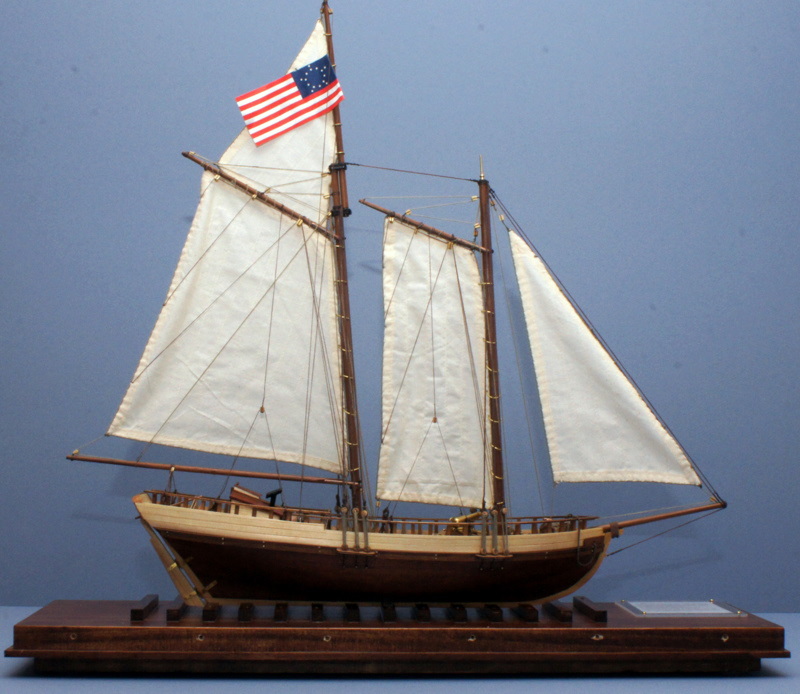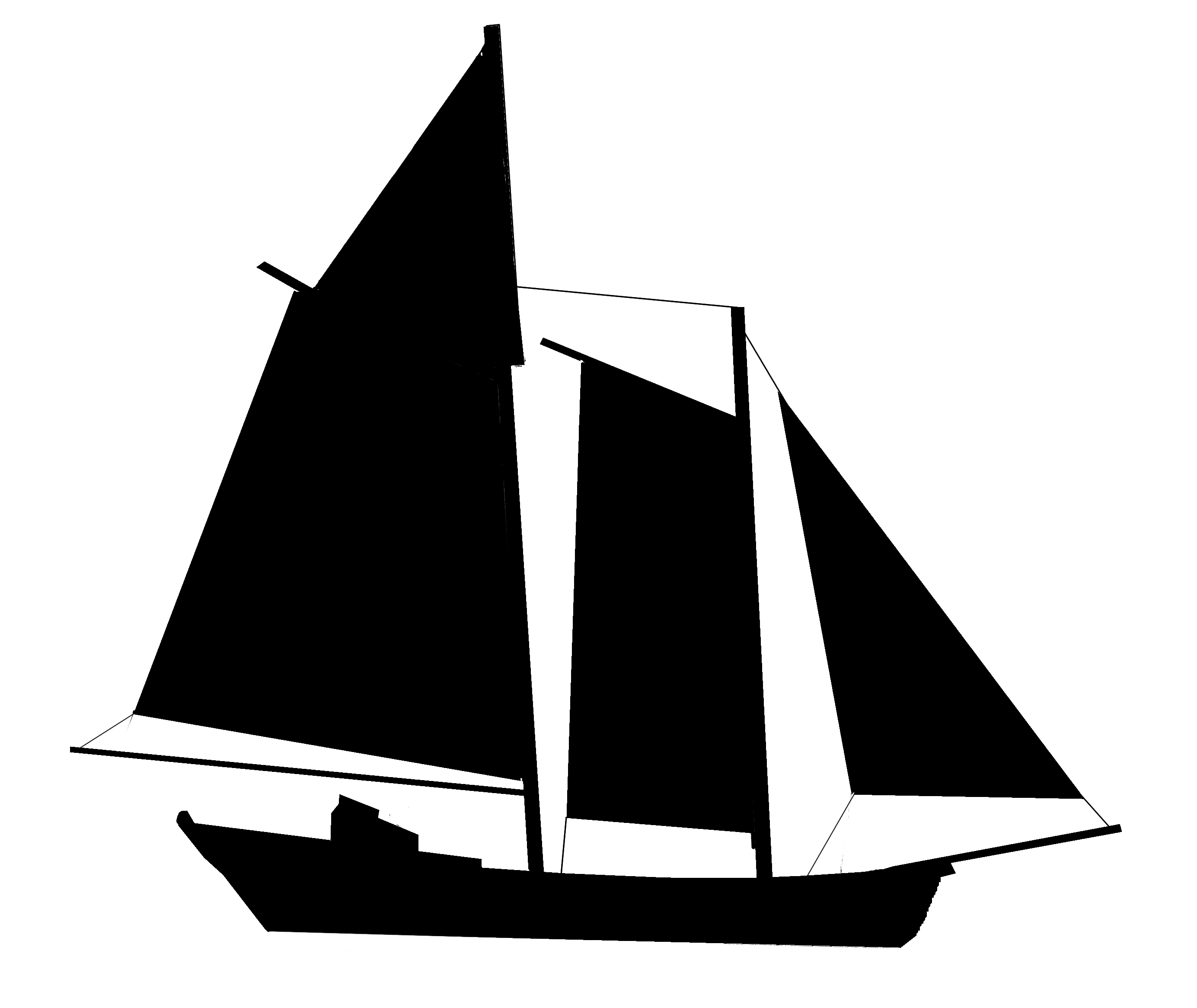VIRGINIA
Particulars
Vessel type: Schooner
Designer: Unknown
Builder: Unknown, but typical for a Baltimore or Norfolk built schooner
Launched: 1819 as per the model information
Date Delivered: 1819 as per the model information
Date Modified: not known
Date Scrapped: not known
Length on deck: about 50 feet
Length over all: about 72 feet
Beam: about 12.5 feet
Depth: about 7 feet
Draft: about 6.5 feet
Gross Tonnage: not known
Lightweight Tonnage: not known
Maximum Displacement: not known
Construction Material: Wood.
Rig Type: Main topsail schooner with jumbo jib.
Sail area: unknown
Crew Size: about 10 Passenger
Capacity: none Propulsion Plant:
Sail only Horsepower: N/A
Cruising Speed: about 6 knots
Maximum Speed: about 9 knots
Armament: one swivel mounted carronade
Model Scale: 1:41
Vessel Description
This vessel is a typical US east coast schooner of the early 1800’s. Schooner rigs were originally designed to be simple and with few sails. Only later in the development of schooner did topsails and fisherman staysails become common. This particular schooner is fitted with a top mast on the mainmast, which is fitted with a topsail. The jib is a typically American jib, which is generally referred to as a jumbo. The jib fills the entire triangular space between tip of the bowsprit, the foremast and the forestay. Since the foremast is not fitted with a headstay which would run from the bow of the vessel to the mast head, the jumbo can be easily swung from one side of the vessel to the other side of the vessel when the vessel tacks. On the other hand if the vessel were to lose the bow sprit, the foremast would no longer supported and the even the main mast could come down. The foresail is loose footed, which means it does not have a boom along the lower edge of the sail. While the vessel is displayed with the keel parallel to the model base, when afloat the vessel would float with the stern deeper than the bow. In other words the vessel’s greatest draft would be in the stern. A vessel that has a keel that is deeper near the stern is termed to have drag to the keel. While still a relatively early schooner in the development of the type, these vessels were good sailors and could be handled by few men. These vessels served as patrol vessels and were not designed to engage in heavy combat. The gun was fitted more as a sign of authority than a weapon to sink other vessels. Still a crew of 10 would be able to fire the gun and sail and maneuver the vessel at the same time.
Vessel History
While there are revenue cutters that are similar in appearance to this vessel, no exact match between a historical vessel and this model has been made. After the revolutionary war the newly formed United States Federal government commissioned ten revenue cutters to enforce tax laws that provided income to the US Treasure Department. Among the first ten revenue cutters there was a schooner Virginia that served in the predecessor to the United States Coast Guard. While the model probably is probably not this particular vessel, the service for this Virginia is typical for the type of vessel represented by this model and is therefore provided here for illustrative purposes. George Washington appointed as her first commander a veteran of the American Revolution who was wounded twice, Richard Taylor. During the 1793 outbreak of yellow fever, Virginia prevented vessels from Philadelphia, the Grenadines, and Tobago from entering the Chesapeake Bay. She also served to prevent the arming of British or French privateers in American ports in 1794 under the order of George Washington. One incident involved the attempted capture of the French privateer Unicorn. The master of Virginia, Taylor, resigned because his war wounds made continuing his work too difficult and passed on his duties to the first mate.
Virginia, US Coast Guard, August 4, 2008, http://www.uscg.mil/history/WEBCUTTERS/Virginia_1791.asp, August 15, 2011. Technical Model Description
This model was built in XXXX by Henry Schaefer from an Artesina Latina kit. While this kit is excellently presented with beautiful full scale and color drawings, and detailed instructions, the actual design of the model is somewhat questionable. Mr. Schaefer chose to leave most of the vessel bright finished, while in real life the vessel probably would have been painted on the topsides and tarred up to the deck strake. Some of the rigging details such as the jig and foresail sheet angles are not realistic and it appears the vessel has a less than realistic depth and a rudder that is quite small. As such, while it is quite a pretty model, it is probably one of the less technically realistic models in the collection.


